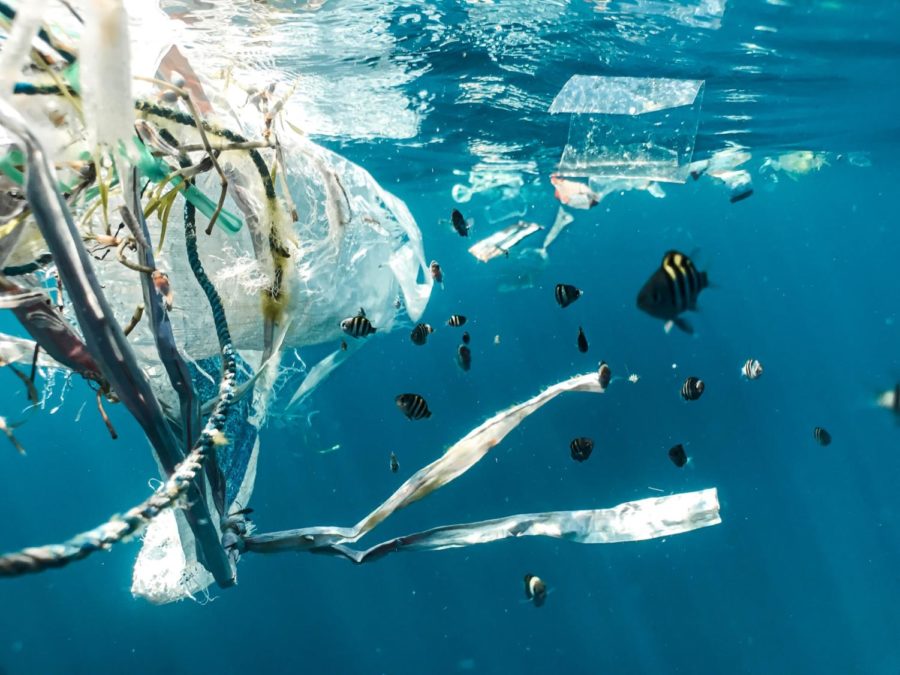The Dirty Truth About Microplastics
Microplastics, fragments of plastic 5mm or less, have been found for the first time in both human blood and human lungs. This widespread contamination is a cause for concern, especially for human health.
Naja Bertolt Jensen / Unsplash
Microplastics have been found in most remote reaches of the Earth including arctic glaciers, Mount Everest, and the deep ocean.
When you think of plastic inside a human being, you probably think about plastic surgery and the various implants involved. However, nowadays you might have plastic inside your lungs, blood, or organs despite never going under the knife.
Scientists have discovered microplastics in human lungs and in human blood for the first time. This discovery has resulted in panic over the health consequences due to the fact that many microplastics contain carcinogens. Moreover, these findings highlighted the widespread contamination associated with microplastics in general. In previous years, microplastics have been discovered in human organs like the spleen, kidney, and liver, but the degree to which microplastics have penetrated our systems was not known to be this extensive.
Microplastics are plastic fragments less than 5mm long that can originate from a variety of sources, including consumer products like plastic bottles, textile fibers (especially polyester clothing), food packaging, and more. They can be found in the ocean, air, seafood, and even salt. According to Boucher and Friot’s 2017 study Primary Microplastics in the Ocean, textile fibers account for 35% of microplastics, tires account for 28%, and city dust accounts for 24%.
Americans on average consume about 126 particles of microplastics and inhale 132 particles of microplastics a day. While the majority of these pieces are passed through bowel movements, small amounts remain and accumulate. Although the effects of microplastics are not yet known, scientists are concerned about the consequences to human health and are thus conducting extensive research.
Microplastics don’t degrade for decades, and are made of toxic, harmful compounds like plasticizers, stabilizers, fillers, and lubricants. It has been known for a while now that BPA, a common chemical used in plastics, can disrupt the endocrine system, however many other chemicals in plastics also contain this property. If these chemicals are released into the human body through microplastics, their endocrine disrupting properties can result in chronic illness like heart disease and diabetes.
The plastics also contain carcinogenic properties. Certain specks of small microplastics have the potential to enter cells. This process can both irritate cells and cause cell deaths. It might also cause DNA damage and result in harmful mutations. This means microplastics can potentially cause cancer. However, scientists are uncertain about these hypotheses and more research is needed.
A common way these plastics enter the body is through food consumption. Microplastics break off from larger pieces of plastics and end up in food products through the production and storage process. Highly processed foods like ice cream and hamburgers , among many other popular foods, have higher amounts of microplastics in them. Heat also causes plastics, including microwavable plastic containers and baby bottles, to shed millions of particles which are then ingested. Preparing formula by shaking hot water in a plastic bottle can expose infants to millions of particles a day.
Many people commonly use plastic water/drink bottles which contain PET plastics. However, these plastic bottles leach these plastic particles into the drink which can end up in your blood. Canned foods and drinks can also shed microplastics as many are lined with a thin layer of plastic (which is applied to prevent the cans from corroding).
“I think people should just be more mindful about the ways in which they package their food. People should avoid using plastic bottles and use reusable containers like thermoses instead of Ziplocs,” said Maggie Schneider ’22.
A big issue is that although there are individual measures one can take to decrease their consumption of microplastics, the microplastic population’s size makes particles virtually unavoidable.
Manufacturing companies produce millions of tons of microplastics that end up in bodies of water and end up circulating the globe. Manufacturing waste is often disposed of improperly and contributes to microplastic pollution. Additionally, there is an abundant amount of plastic pollution. Bodies of water are filled with plastic bags, bottles, etc. and the sun can degrade these larger pieces into microplastics. As a result, even drinking water contains microplastics.

(Soren Funk / Unsplash)
A proposed solution to this problem is recycling; however, the majority of plastic is not recycled. Even the plastic that you throw in the recycling bin isn’t fully broken down and reused. Recycling was a ploy by large oil and gas companies to make consumers feel better through green washing. The majority of “recycled plastics” end up in landfills.
Another issue is that there is an excessive amount of plastic use. Packaging is overly dependent on plastics, especially food packaging. Many fruits and vegetables do not need to be wrapped in layers and layers of plastic, but oftentimes they are sold that way.
Pollution from companies is a big contributor to microplastics along with unsustainable product packaging. But the EPA has been struggling to combat this crisis as it suffers rollbacks in ability and funding (as a result of previous administrations including the Trump administration). They have also declined to regulate harmful chemicals. The Supreme Court revived a Trump Era ruling to reduce states’ abilities to stop projects that would pollute water. These cutbacks to regulations and environmental protection policies have a large impact on the future of microplastic contamination.
Microplastics entering our bodies is an issue that affects all, but like all health issues, certain populations are more at risk for microplastic contamination than others and it raises the question of exacerbating health inequality. “There’s definitely a wealth disparity that can affect peoples’ health – people who can’t afford fancy water bottles and safe containers are going to be ingesting more microplastics than those who can. Often, the level of safety someone has in this regard is correlated to how many resources they have,” said Schneider ’22.
Many Americans cannot afford healthcare and microplastics will only exacerbate the issue. If microplastics do cause substantial cell death and mutations in humans like scientists speculate, then cancer rates will only continue to rise. As the population gets sicker, the American healthcare system, and many other nations, will not be prepared to address this.
Microplastics and their even smaller counterpart nanoplastics pose a threat to human health, and instead of waiting for definitive results from researchers, we should proactively reduce our contact with plastics and lobby for substantial water protection policies. Addressing plastic production and pollution must be a priority.
Microplastics and their even smaller counterpart nanoplastics pose a threat to human health, and instead of waiting for definitive results from researchers, we should proactively reduce our contact with plastics and lobby for substantial water protection policies. Addressing plastic production and pollution must be a priority.
Carolyn Chui is an Editor-in-Chief for ‘The Science Survey.’ She enjoys writing articles on politics, business, and international relations. Carolyn...

